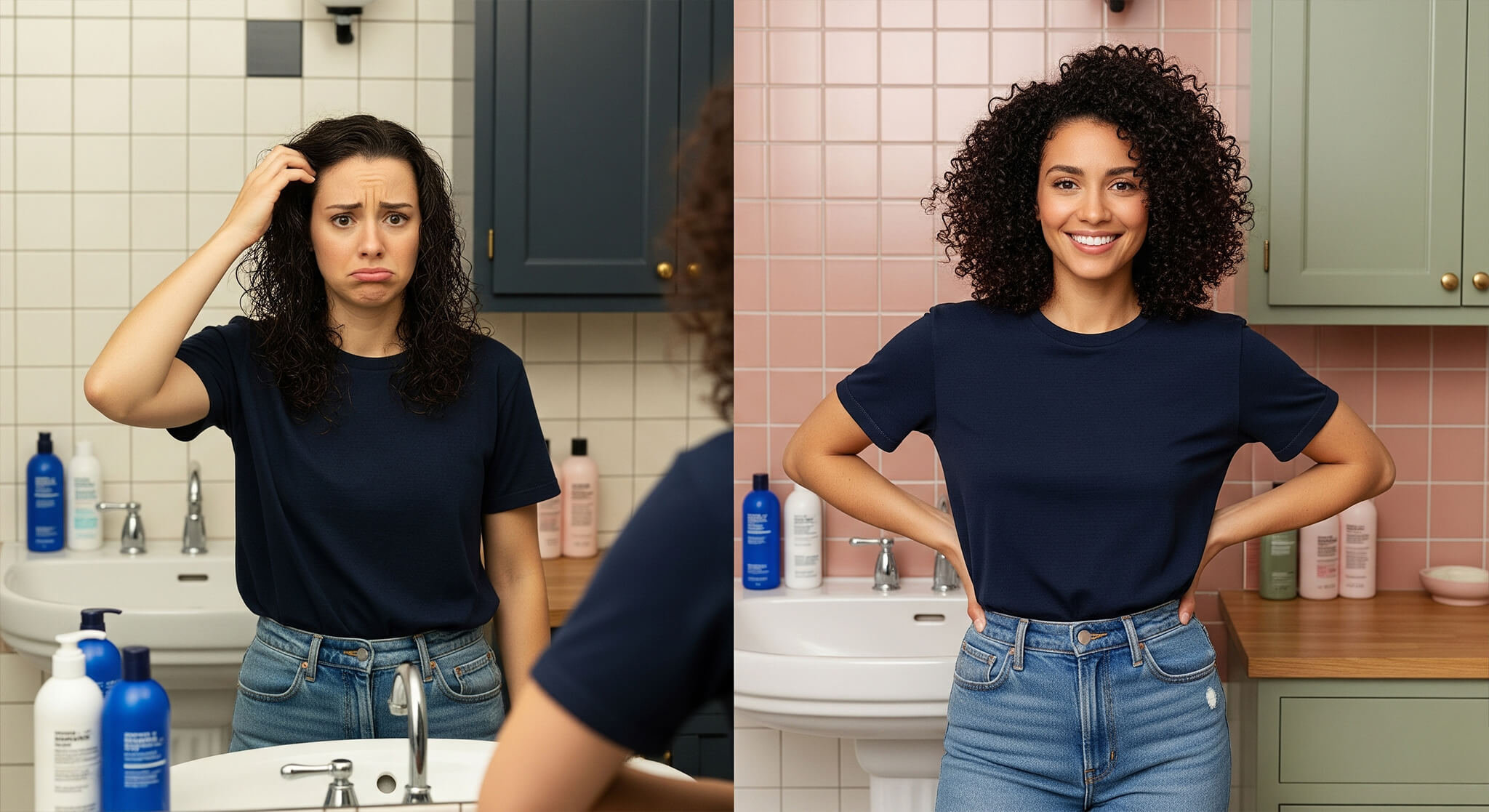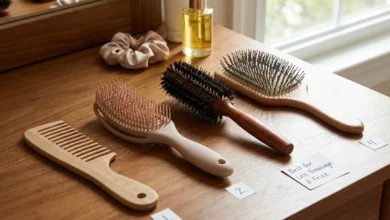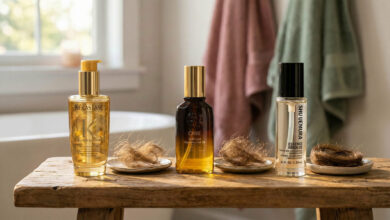Are Silicone-Based Products Good or Bad for Frizzy Hair?
Table of contents
- The Most Controversial Ingredient on Your Anti-Frizz Shelf
- The Science: How Silicones Actually Tame Frizz
- The “Bad” Rap: Understanding the Two Different Types of Silicones
- The Smart Silicone Strategy: A Simple Rulebook for Frizz-Free Hair
- The At-a-Glance Comparison Table
- The Verdict: An Effective Tool, Not a Villain
The Most Controversial Ingredient on Your Anti-Frizz Shelf
Walk down any hair care aisle, and you’ll find them in the ingredient lists of almost every anti-frizz serum, shine spray, and smoothing conditioner: silicones. At the same time, the “clean beauty” movement has often labeled them as a harmful ingredient to be avoided at all costs. This has left many of us confused: are silicones a miracle smoother for frizz, or are they a damaging ingredient in disguise?
Specifically for frizzy, unmanageable hair, what is the scientific truth? Are they good or bad?
The answer is not a simple yes or no. It depends entirely on the type of silicone and how you use it. We’re breaking down the science to give you the definitive guide to using silicones for your smoothest, shiniest hair ever.
The Science: How Silicones Actually Tame Frizz
Silicones are synthetic polymers that have a unique set of properties that make them incredibly effective at fighting frizz.
They are Master “Sealers” of the Hair Cuticle
Think of a silicone molecule as a lightweight, breathable “raincoat” for your hair strand. Silicones form a thin, protective, and water-repelling film around the hair’s cuticle. This does two essential things to combat frizz:
- It Seals the Cuticle Shut: Frizz is, by definition, a raised and roughened hair cuticle. Silicones smooth down these edges, creating a sleek, uniform surface. This is what provides that instant, incredible hair shine.
- It Blocks Humidity: The water-repelling film prevents ambient moisture from the air from penetrating the hair shaft. This is crucial because humidity is the primary trigger that causes hair to swell and frizz up.
The “Bad” Rap: Understanding the Two Different Types of Silicones
The controversy around silicones arises because not all of them behave the same way. The key is understanding the difference between those that rinse away easily and those that don’t.
The “Good” Silicones: Water-Soluble & Lightweight
- How to Spot Them: These are generally silicones with a “PEG-” prefix or those that end in “-cone” but are part of a longer, more complex name (e.g., Dimethicone Copolyol).
- Why They’re Easy: They are lightweight and have been chemically modified to dissolve in water. This means they rinse away cleanly with water and gentle, sulfate-free shampoos, providing all the smoothing benefits without the risk of heavy buildup.
The “Tricky” Silicones: Non-Water-Soluble
- How to Spot Them: These are the classic, heavy-duty silicones like Dimethicone, Cyclomethicone, and Amodimethicone.
- Why They Get a Bad Rap: These are incredibly effective smoothing and protecting agents. However, they do not rinse away with just water. If you use products with these silicones repeatedly without properly cleansing, they can build up on the hair strand. This buildup is the real problem people often have—it can weigh hair down, make it feel greasy, and prevent the moisturizing ingredients in your hair mask from penetrating the hair. The issue isn’t the silicone itself, but the buildup it can cause if not managed correctly.
This specific type of buildup is the true enemy. It can make the scalp feel greasy and weighed down, a sensation often mistaken for a different issue, like dandruff. This confusion leads many to ask Are “Head & Shoulders” Products Truly Effective for Long-Term Dandruff Treatment? when the real problem isn’t fungus, but simply the need to remove this stubborn silicone film.
The Smart Silicone Strategy: A Simple Rulebook for Frizz-Free Hair
Rule #1: Don’t Fear Them, Manage Them
For fighting frizz, especially in humid climates, silicones are one of the most effective tools available. The key is to be a smart user.
Rule #2: A Weekly Clarifying Wash is Non-Negotiable
If you use products containing non-water-soluble silicones (and most heavy-duty anti-frizz serums do), you must use a clarifying shampoo once a week or once every two weeks. This is the essential “reset” button that thoroughly removes all traces of buildup, allowing your hair to feel light, clean, and able to absorb moisture again, primarily through the action of stronger surfactants designed for deep cleansing.
Rule #3: Focus on Mid-Lengths and Ends
Your roots and scalp rarely need the intense smoothing of a silicone serum. Concentrate the application of these products on the mid-lengths and ends of your hair, which are the most prone to frizz, damage, and dryness.
The At-a-Glance Comparison Table
| Silicone Type | Key Examples on Label | How It Rinses | Buildup Potential |
| Water-Soluble | PEG-Dimethicone, Dimethicone Copolyol | Rinses easily with water/gentle shampoo | Low |
| Non-Water-Soluble | Dimethicone, Amodimethicone | Requires a clarifying shampoo | High |
The Verdict: An Effective Tool, Not a Villain
So, are silicones good or bad for frizzy hair? From a pure performance perspective, they are exceptionally good. They are one of the most effective ingredients for smoothing the cuticle and blocking the humidity that causes frizz and dull hair.
Their “bad” reputation comes not from the ingredient itself, but from the buildup that can result from improper use. By understanding the different types and committing to a regular clarifying wash, you can harness the power of silicones to achieve your smoothest, shiniest, and least frizzy hair, without any of the downsides.






